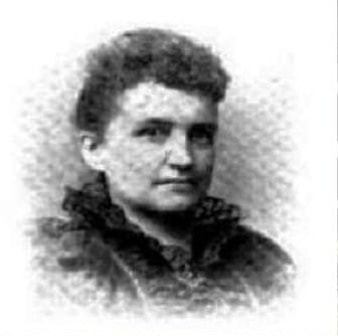|
Jeanne Doan, Assistant Director & John J. Zimkus, WCHS Historian Three women, of varied backgrounds, joined together to become the nucleus of the women’s suffrage movement in Warren County: Lucile Blackburn Berry, Mary Proctor Wilson and Ladora Scoville Owens (once owner of Glendower Mansion).
The first meeting of what would become the Equal Suffrage League met in the Lebanon Opera House on April 22, 1912. After a committee was formed to nominate officers, Wilson was chosen as the first president and Owens as the vice president. Representatives from each township were selected and Berry was picked to represent Turtlecreek. On June 27, 1912, the committee met at Wilson’s home at 108 N. Broadway, located at the northeast corner of Silver and Broadway (The Breakfast Club stands there now). There, the League arranged for the Dr. S. D. Fess, the Republican candidate for Congress in the sixth district and the president of Antioch College, to deliver a non-partisan address at the Lebanon Opera House. There, he put himself on record for the women’s suffrage proposal. Fess would win that election and later be elected a US senator from Ohio. In 1912, multimillionaire real estate magnet and Lebanon native, William Elmer Harmon (you can learn all about him in a previous post) appointed his good friend, Owens, to be a board member of the newly established Harmon Civic Trust. Harmon had stipulated that at least two members of the Trust’s board of trustees must be women. Owens was one and Berry was the other. The League made arrangements with the Trust to hold regular meetings at Harmon Hall. By 1914, Lucile Blackburn Berry was the president of the Equal Suffrage League. On July 23, 1914, The Western Star reported that the League had “held a very enthusiastic" meeting on July 17. At the meeting, Berry "...gave a report of the results of the recent circulation of petitions. There were 1,049 signatures obtained in the County." Wilson, along with another couple, the Chapmans, were chosen to present the petitions to the Secretary of State in Columbus. Nearly 150,000 names were signed to the suffrage petitions, 46,000 more than necessary. The Western Star headline, on July 30, 1914, read, “Ohio Suffragists To Descend on State Capitol Today." And descend they did. At 4:30 that afternoon, bands accompanied suffrages from Cincinnati, Cleveland, Toledo, Akron and other areas to form a procession that marched from the Ohio Suffrage Organization's Columbus headquarters, in the Chamber of Commerce Building, to Capitol Square. Harriet Taylor Upton, the organization's president, spoke along with several others including the president of Ohio State University and Representative W. B. Kilpatrick. The counties presented their petitions and, as planned, Mr. and Mrs. Chapman and Mary Proctor Wilson presented Warren County's. Congress wouldn't draft the 19th amendment (giving women the right to vote) until 1919 but Ohio was quick to ratify it on June 16, 1919. The also passed a law stating that, if the amendment wasn't a law by the 1920 election, women would be about to view in Ohio regardless. However, by August of 1920, the amendment would gain the backing it needed (36 states) and pass into constitutional law. Thanks, in part, to a teacher (Berry), a newspaper editor (Wilson) and a socialite (Owens) who came together to fight for all Americans' right to vote, regardless of gender. Learn more of the story at Harmon Museum's newest exhibit, "Women Leading the Way."
0 Comments
Your comment will be posted after it is approved.
Leave a Reply. |
AuthorVarious staff and volunteer writers. Categories
All
Archives
June 2024
|
Email: [email protected]
Wchs Office/Harmon MuseumTues - Sat: 10am - 4pm
Year Round |
1795 BEEDLE cABINPhone for hours
Year Round |



 RSS Feed
RSS Feed





